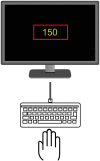Hybrid framework of fatigue: connecting motivational control and computational moderators to gamma oscillations
- PMID: 38864094
- PMCID: PMC11165150
- DOI: 10.3389/fnrgo.2024.1375913
Hybrid framework of fatigue: connecting motivational control and computational moderators to gamma oscillations
Abstract
Introduction: There is a need to develop a comprehensive account of time-on-task fatigue effects on performance (i.e., the vigilance decrement) to increase predictive accuracy. We address this need by integrating three independent accounts into a novel hybrid framework. This framework unites (1) a motivational system balancing goal and comfort drives as described by an influential cognitive-energetic theory with (2) accumulating microlapses from a recent computational model of fatigue, and (3) frontal gamma oscillations indexing fluctuations in motivational control. Moreover, the hybrid framework formally links brief lapses (occurring over milliseconds) to the dynamics of the motivational system at a temporal scale not otherwise described in the fatigue literature.
Methods: EEG and behavioral data was collected from a brief vigilance task. High frequency gamma oscillations were assayed, indexing effortful controlled processes with motivation as a latent factor. Binned and single-trial gamma power was evaluated for changes in real- and lagged-time and correlated with behavior. Functional connectivity analyses assessed the directionality of gamma power in frontal-parietal communication across time-on-task. As a high-resolution representation of latent motivation, gamma power was scaled by fatigue moderators in two computational models. Microlapses modulated transitions from an effortful controlled state to a minimal-effort default state. The hybrid models were compared to a computational microlapse-only model for goodness-of-fit with simulated data.
Results: Findings suggested real-time high gamma power exhibited properties consistent with effortful motivational control. However, gamma power failed to correlate with increases in response times over time, indicating electrophysiology and behavior relations are insufficient in capturing the full range of fatigue effects. Directional connectivity affirmed the dominance of frontal gamma activity in controlled processes in the frontal-parietal network. Parameterizing high frontal gamma power, as an index of fluctuating relative motivational control, produced results that are as accurate or superior to a previous microlapse-only computational model.
Discussion: The hybrid framework views fatigue as a function of a energetical motivational system, managing the trade-space between controlled processes and competing wellbeing needs. Two gamma computational models provided compelling and parsimonious support for this framework, which can potentially be applied to fatigue intervention technologies and related effectiveness measures.
Keywords: computational modeling; fatigue; high frequency gamma oscillations; microlapses; motivational control; vigilance.
Copyright © 2024 Borghetti, Curley, Rhodes, Morris and Veksler.
Conflict of interest statement
The authors declare that the research was conducted in the absence of any commercial or financial relationships that could be construed as a potential conflict of interest.
Figures






Similar articles
-
Using computational cognitive modeling to predict dual-task performance with sleep deprivation.Hum Factors. 2009 Apr;51(2):251-60. doi: 10.1177/0018720809334592. Hum Factors. 2009. PMID: 19653487
-
Luring the Motor System: Impact of Performance-Contingent Incentives on Pre-Movement Beta-Band Activity and Motor Performance.J Neurosci. 2019 Apr 10;39(15):2903-2914. doi: 10.1523/JNEUROSCI.1887-18.2019. Epub 2019 Feb 8. J Neurosci. 2019. PMID: 30737309 Free PMC article.
-
Computational cognitive modeling of the temporal dynamics of fatigue from sleep loss.Psychon Bull Rev. 2017 Dec;24(6):1785-1807. doi: 10.3758/s13423-017-1243-6. Psychon Bull Rev. 2017. PMID: 28210999 Free PMC article. Review.
-
Motivational fatigue: A neurocognitive framework for the impact of effortful exertion on subsequent motivation.Neuropsychologia. 2019 Feb 4;123:141-151. doi: 10.1016/j.neuropsychologia.2018.04.030. Epub 2018 May 5. Neuropsychologia. 2019. PMID: 29738794
-
A neurophysiological signature of motivational incongruence: EEG changes related to insufficient goal satisfaction.Int J Psychophysiol. 2013 Jul;89(1):1-8. doi: 10.1016/j.ijpsycho.2013.04.017. Epub 2013 Apr 30. Int J Psychophysiol. 2013. PMID: 23644257 Review.
References
-
- Anderson J. R. (2007). How Can the Human Mind Occur in the Physical Universe? Oxford: Oxford University Press.
LinkOut - more resources
Full Text Sources
Research Materials

